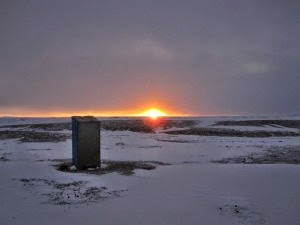“Hygiene is two-thirds of health.”

Outhouse in the Gobi Desert | Mongolia, 2009.
~ Lebanese Proverb
There’s no way around it. If you have spent any significant amount of time in the wilderness, chances are at one time or another you have had a case of the runs. The two main sources of this unpleasantness are sloppy hygiene practices and waterborne illnesses.
Trail Hygiene Tips
- Clean Hands: Before eating and after going to the toilet, always wash your hands (away from water sources) or use antiseptic hand sanitizer.
- Sharing Food: If sharing trail-mix with fellow hikers, pour some into their hands rather than have them dip into your bag.
- After Meals: Thoroughly clean your pot and eating utensil after meals.
- Baby Wipes: If you are hiking in an area in which water is scarce, consider bringing along some baby wipes for self-cleaning purposes.
Waterborne Illnesses
Maladies such as Giardiasis and Cryptosporidium are becoming increasingly prevalent the world over. Any water sources situated downstream of human settlement, agriculture, backcountry huts or grazing animals should be considered potentially contaminated. In such cases, it is always wise to purify.
On the other hand, if you are hiking in a pristine mountain environment largely devoid of potential contaminants, it would be a shame to deprive yourself of one of nature’s greatest joys (ie. drinking directly from a spring or fast-flowing stream). Ultimately avoiding waterborne illnesses comes down to three factors: research, on-trail choices and method of treatment.

Hoping for the best | Copper Canyon Traverse, Mexico, 2013.
Research
Before embarking on a hike, do as much research as possible in regards to the current status of water conditions. Check the internet, guidebooks and most importantly up-to-date information from local sources.
On-Trail Choices
- Whenever possible collect water from above trails, campsites, and huts.
- The closer you are to the source the better.
- Water taken directly from springs or seeps is usually fine.
- Always purify if there is any sign of livestock feces, stagnation or foam.
- When collecting water from streams or creeks, the faster the flow the better.
- There is no foolproof strategy; judge each source on its own merits. As a general rule of thumb: If in doubt, treat.
Muddy, alkaline “water source” | Southwestern Horseshoe, UT, 2012.
Treatment
Methods of treatment include boiling, filtering, ultraviolet light and chemicals. All of them have advantages and disadvantages. See Water Purification in the GEAR section for details.